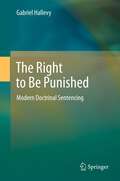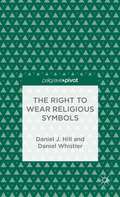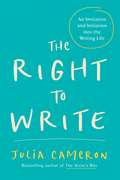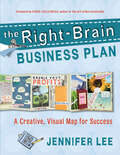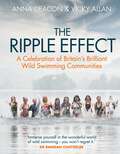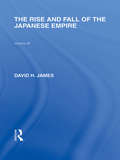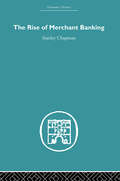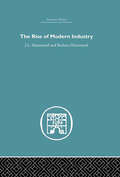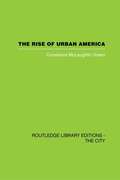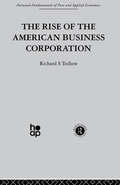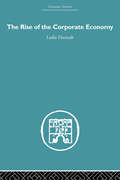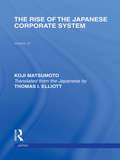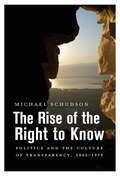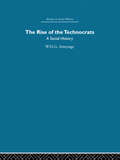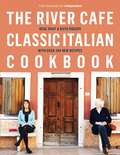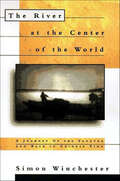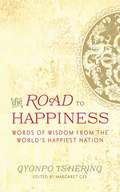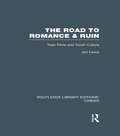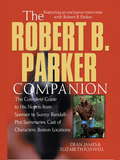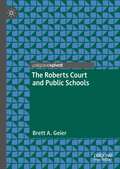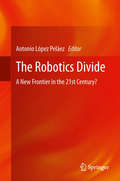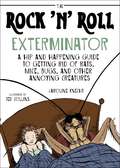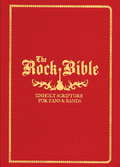- Table View
- List View
The Right to Be Punished
by Gabriel HallevyDoes an offender have the right to be punished? "The right to be punished" may sound like an oxymoron, but it is not necessarily so. With the emergence of modern criminal law, the offender gained the right to be punished by rational criminal law rather than being lynched by an angry mob. The present-day offender may have the right to be punished by doctrinal sentencing rather than being subjected to verdicts based on vague, unclear, and uncertain principles. In modern criminal law, the imposition of criminal liability follows accurate and strict rules, whereas there are no similar rules for the imposition of punishment. The process of sentencing is vague and obscure, as are the considerations used for the imposition of punishments. The objective of the present book is to propose a comprehensive, general, and legally sophisticated theory of modern doctrinal sentencing. The challenges of such a legal theory are plenty and complex. In addition to increasing clarity and certainty, modern doctrinal sentencing must deal with modern types of delinquency (e.g. organized crime, recidivism, corporate offenders, high-tech offenses, etc.) and modern principles of criminal law. Modern doctrinal sentencing must serve to ensure optimal sentencing.
The Right to Wear Religious Symbols
by Daniel J. Hill Daniel WhistlerClearly presenting the case-law concerning Article 9 of the European Convention of Human Rights, this is a lively and accessible analysis of a key issue in contemporary society: whether there is a human right to wear a religious symbol and how far any such right extends.
The Right to Write: An Invitation and Initiation into the Writing Life (Artist's Way)
by Julia CameronWhat if everything we have been taught about learning to write was wrong? In The Right to Write, Julia Cameron's most revolutionary book, the author of the bestselling self-help guide The Artist's Way, asserts that conventional writing wisdom would have you believe in a false doctrine that stifles creativity. With the techniques and anecdotes in The Right to Write, readers learn to make writing a natural, intensely personal part of life. Cameron's instruction and examples include the details of the writing processes she uses to create her own bestselling books. She makes writing a playful and realistic as well as a reflective event. Anyone jumping into the writing life for the first time and those already living it will discover the art of writing is never the same after reading The Right to Write.
The Right-Brain Business Plan: A Creative, Visual Map for Success
by Jennifer LeeMillions of artists, entrepreneurs, crafters, and solopreneurs dream of making a living doing what they love. But turning their vision into a viable business plan can feel like trying to fit a square peg into a round hole. Jennifer Lee knows what it’s like to make the entrepreneurial leap — and how to do it successfully. The key is showing creative types how to use — rather than stifle — the imagination and intuition that make them creative in the first place. Lee’s illustrated, colorful worksheets and step-by-step instructions are playful yet practical, enabling readers to get down to the essential business of defining their vision and nailing down plans for funding, marketing, networking, and long-term strategy. Both budding and seasoned business owners will benefit from Lee’s wonderfully original approach. Discover how to: • Develop a financial plan with fun and flair • Select your circle of support to get the work done • Clarify your business values and goals • Paint a picture of your business landscape • Understand your competition and what makes you stand out from the crowd • Identify your perfect customers and create a marketing plan to reach them • Map out concrete action steps to bring your Right-Brain Business Plan to life
The Rights Of Persons With Disabilities Act, 2016
by Government Of IndiaThe Rights Of Persons With Disabilities Act, 2016 contains 17 chapters.
The Ripple Effect: A Celebration of Britain's Brilliant Wild Swimming Communities
by Anna Deacon Vicky AllanA Beautifully Photographed Swimming Book“Immerse yourself in the wonderful world of wild swimming - you won't regret it.” -Dr. Rangan ChatterjeeDive into the wonderful world of wild swimming with a series of photographs by Anna Deacon that captures the wonderful world of diving.Forging friendships in the water. Enter the world of aquatics and learn about the community of swimmers that Britain’s wild swimming creates. Wild swimming isn’t just a pastime; it’s an ocean of connection that attracts swimmers across Britain and draws people from all walks of life to dive deep and find inspiration in the water.A swimmer’s paradise. The Ripple Effect showcases all types of swimmers. From fans of the wim hof method to those who want to take their swimming exercises to the open water, this book of aquatic photography is the perfect gift for swimmers.More than just pictures. Anna Deacon offers a community to connect. With visually stunning photographs depicting wild swimmers in Britain’s natural aquatic habitats, you’ll feel just as eager to go diving for your own wild adventure.Inside, you’ll find: Authentic photography showcasing an array of wild swimming communitiesSwimming stories that inspire, encourage, and laughThe wonderful world of wild swimming and why it’s so popular in BritainIf you liked Shaping Surf History, Comp, or Women Making Waves, or Winter Swimming, you’ll love The Ripple Effect.
The Rise and Fall of the Japanese Empire (Routledge Library Editions: Japan)
by David H JamesThis volume is a history of the Japanese drive for the conquest of Greater East Asia. It includes an account of the Malayan campaign and the Fall of Singapore, followed by an outline of the dominant features of the campaign in S E Asia and the Pacific and ending with the attack on Japan and the unconditional surrender. As a prisoner in Tokyo, the author was able to observe the reactions of the people and the government to the bombing of Japan, and by revealing their overwhelming defeat, to dispose of the fiction that surrender was brought about by two atomic bombs. The outstanding value of the work is its analysis of the fundamental problems of Japan.
The Rise of Merchant Banking
by Stanley ChapmanThis is the first serious history of merchant banking, based on the archives of the leading houses and the records of their activities throughout the world. It combines scholarly insight with readability, and offers a totally new assessment of the origins of one of the most dynamic sectors of the City of London money market, of the British economy as a whole and of a major aspect of the growth of international business. Dr Chapman has researched new material from the archives of Rothschilds, Barings, Kleinwort Benson and other leading houses together with a wide range of archives and published work in Europe, America and South Africa to trace the roots of British enterprise in financing international trade, exporting capital, floating companies, arbitrage, and other activities of the merchant banks. While mindful of the subtleties of international financial connections, this book assumes no previous acquaintance with the jargon of banking, economics and sociology. It will therefore prove equally interesting to students of history, business and finance, and offers a 'good read' to anyone interested in the City of London and the international economy.
The Rise of Modern Industry (World History Ser. #No. 48)
by Barbara Hammond J.L. HammondFirst Published in 2005. Routledge is an imprint of Taylor & Francis, an informa company.
The Rise of Urban America
by Constantine McLaughlin GreenThe rise of cities in the United States from the early seventeenth century to the 1960s is the subject of this sophisticated and witty appraisal by a Pulitzer Prize historian. Constance McLaughlin Green traces the forces - economic, political, social - that led to today's urban civilization, beginning with the growth of colonial seaports and local government, the rise of new cities that competed for wealth and power with the older cities, the spread of industrialization, transportation and communications that made complex city life possible. She discussed the influence of city life on art and architecture, the impact of depression and prosperity upon urban centres, and analyses present-day problems - race-relations, the population explosion, automation, the rise of suburbia, and the development of the 'megapolis' that links city with city in one vast urban interstate region. This book was first published in 1966.
The Rise of the American Business Corporation
by R. TedlowThis title presents an historical survey of the American business corporation from the colonial era to the present day.
The Rise of the Corporate Economy
by Leslie HannahFirst published in 1976, this much acclaimed book looks at the story of how today's large corporations have superseded the small competing firms of the nineteenth century. The long-run analysis confirms that the crucial periods in the formulation of the modern corporate system were the 1920's and 1960's. The merger wave of these decades was associated with a desire to improve the efficiency of Britain’s industrial organization, and the author shows that it was in a large measure responsible for the trend improvement (by historical if not international standards) in Britain's growth performance. Students of business, economic history and industrial economics will all welcome the return to print of a notable contribution to the continuing debate on the evolution and control of the corporate manufacturing sector.
The Rise of the Japanese Corporate System (Routledge Library Editions: Japan)
by Koji MatsumotoJapan’s economy is invariably seen as a prime example of a capitalist system, and a consideration of the elements upon which the Japanese economy is founded seems to lead inexorably to the conclusion that Japan is an established member of the group of highly developed capitalist nations. Yet a country’s internal mechanisms can differ markedly from the system as perceived externally. Although not yet widely recognized, a new kind of economic system has developed in Japan, a system that differs greatly from traditional capitalism. The author of this book has observed Japanese industry from the inside. He provides detailed explanations of the unique features of the new corporate system and how it differs from the system of orthodox capitalistic corporations.
The Rise of the Right to Know: Politics and the Culture of Transparency, 1945-1975
by Michael SchudsonAs Michael Schudson shows in The Rise of the Right to Know, modern transparency dates to the 1950s, 1960s, and 1970s―well before the Internet―as reform-oriented politicians, journalists, watchdog groups, and social movements won new leverage. At the same time, the rapid growth of higher education after 1945, together with its expansive ethos of inquiry and criticism, fostered both insight and oversight as public values.
The Rise of the Technocrats: A Social History
by W.H.G. ArmytageFirst published in 2006. Routledge is an imprint of Taylor & Francis, an informa company.
The River Cafe Classic Italian Cookbook
by Ruth Rogers Rose GrayThirty years after its doors first opened, The River Café remains one of London's most iconic restaurants, loved for its innovative Italian food. Pioneering chefs Rose Gray and Ruth Rogers together changed the face of Italian food in Britain, championing seasonality well ahead of their time from their West London kitchen, which won a Michelin star in 1998 and has kept it ever since. The restaurant helped launch the careers of Jamie Oliver and Hugh Fearnley-Whittingstall, to name but two. Over the course of decades, Rose and Ruth visited Italy time and again, fascinated by the subtleties of dishes from the many different, and diverse, regions of the country. Their unique approach to Italian farmhouse cooking was learned from local mothers, grandmothers, cousins and wine makers who invited them into their kitchens and shared wisdom and precious family recipes. This book gathers together Rose and Ruth's personal interpretations of those heirloom recipes. It's a celebration of the real, classic food of Italy; the traditional, regional food they ate on their travels; and the food they went on to cook at the restaurant and at home. These are the recipes they became well known for, as well as some that are cooked less and less in Italy these days and which Rose and Ruth longed to preserve and pass on.
The River at the Center of the World: A Journey Up the Yangtze and Back in Chinese Time
by Simon WinchesterA stunning tour of China, its people, and its history. Chosen as one of the best travel books of 1996 by the New York Times Book Review. Rising in the mountains of the Tibetan border, the Yangtze River, the symbolic heart of China, pierces 3,900 miles of rugged country before debouching into the oily swells of the East China Sea. Connecting China's heartland cities with the volatile coastal giant, Shanghai, it has also historically connected China to the outside world through its nearly one thousand miles of navigable waters. To travel those waters is to travel back in history, to sense the soul of China, and Simon Winchester takes us along with him as he encounters the essence of China--its history and politics, its geography and climate as well as engage in its culture, and its people in remote and almost inaccessible places. The River at the Center of the World is travel writing at its best: lively, informative, and thoroughly enchanting.
The Road to Happiness: Words of Wisdom from the World's Happiest Nation
by Margaret Gee Gyonpo TsheringWith clear, simple prose, and poetic turns of phrase, this inspirational collection of quotations reflects the unique country of Bhutan and its universal embrace of compassion, understanding, and kindness. Some of the quotes are also a bit quirky and funny—why not? After all, this remarkable little kingdom in the Eastern Himalayas just may hold the secret to lifelong happiness. Renowned for their government edict that “gross national happiness is more important than gross national product,” the Bhutanese grounding in Buddhist ideals suggests that material and spiritual development should occur side by side—something we can forget too often. So dive into this inspiring collection of wisdom, proverbs, and general sage advice to help you on your own road to happiness—or at least put a smile on your face.Although, as the Bhutanese saying goes, You don’t have to smile if you are pleased, nor do you have to frown if you are displeased. People who do this don’t get so many wrinkles!One dream cannot rest on two pillows.Evil words are like poisonous flowers. Evil actions are like poisonous roots. It is more important to have good teeth in your head than a hat which fits properly on it. Just as there are green fertile pastures and barren plains, the same is true for the territory of the heart and mind.If you take the jungle away from a free, roaming snow leopard it will feel like a poor street dog.So give the gift of happiness today!
The Road to Romance and Ruin: Teen Films and Youth Culture (Routledge Library Editions: Cinema)
by Jon LewisThis book analyses the teen film as the rare medium able to represent the otherwise chaotic and conflicting experience of youth. The author focuses on six major issues: alienation, deviance and delinquency, sex and gender, the politics of consumption, the apolitics of youth(ful) rebellion, and regression into nostalgia. Despite the many differences within the genre, this book sees all teen films as focused on a single social concern: the breakdown of traditional forms of authority – school, church, family. Working with the theories of such diverse scholars as Kenneth Keniston, Bruno Bettelheim, Erik Erikson, Theodor Adorno, Simon Frith, and Dick Hebdige, the author draws an innovative and flexible model of a cultural history of youth. Originally published in 1992.
The Robert B. Parker Companion
by Elizabeth Foxwell Dean JamesFinally, here is the complete guide to Robert B. Parker's novels from Spenser to Jesse Stone to Sunny Randall, plot summaries, cast of characters, Boston locations and maps, and more.<P> Even before he was named Grand Master for Lifetime Achievement by the Mystery Writers of America, Edgar® Award-winning Robert B. Parker had assumed the mantle of dean of American crime fiction. "Taking his place beside Dashiell Hammett, Raymond Chandler, and Ross MacDonald" (Boston Globe), he transcended the crime genre. As one of the most prolific writers in the world, he reinvented crime writing. <P> Now his millions of fans can discover everything about Robert B. Parker and his books: <P> - Comprehensive biography of Robert B. Parker<P> - Inside the Spenser novels<P> - All about the Jesse Stone and Sunny Randall novels<P> - Parker's stand-alone fiction<P> - Complete cast of characters<P> - Spenser on film<P> - Robert B. Parker's Boston: locales, crime scenes, and maps<P> - Memorable quotes<P> - Inclusive bibliography<P> - Plus, an exclusive and insightful new interview with Robert B. Parker
The Roberts Court and Public Schools
by Brett A. GeierThis unique and timely book offers a synthesis, analysis, and evaluation of education-related rulings of the US Supreme Court from 2005 to the present. Throughout the course of the twentieth century into the twenty-first century, the Supreme Court issued rulings, which frequently vacillate based on the political composition of the justices who sit on the bench. Chapters will cover both an overview of the role of Supreme Court rulings in school policy and the court’s transformation in the late twentieth century into the present day. These themes will be converted into robust chapters which will provide a legal analysis of the Roberts Court years, and an evaluation of the jurisprudence and its practical effect on public schools.
The Robotics Divide: A New Frontier in the 21st Century?
by Antonio López PeláezSocieties survive in their environment and compete with each other depending on the technology they develop. Economic, military and political power are directly related to the available technology, while access to technology is key to the well-being of our societies at the individual, community and national level. The Robotics Divide analyzes how robotics will shape our societies in the twenty-first century; a time when industrial and service robotics, particularly for military and aerospace purposes, will become an essential technology. The book, written by experts in the field, focuses on the main technological trends in the field of robotics, and the impact that robotics will have on different facets of social life. By doing so, the authors aim to open the "black box" of a technology which, like any other, is designed, implemented and evaluated according to the economic and cultural patterns of a cosmopolitan society, as well as its relations of power. The Robotics Divide explores future developments in robotics technology and discusses the model of technological development and the implementation of robotics in this competitive market economy. Then the authors examine to what extent it is possible to determine the characteristic features of the robotic divide, namely in what ways the robotic divide differs from the digital divide, and how a model to integrate this technology can be developed without reproducing patterns of inequality and power that have characterized the advent of previous technologies. These issues - inequality, robotics and power - are of concern to robotics and advanced automation engineers, social scientists, economists and science policy experts alike.
The Rock 'N' Roll Exterminator: A Hip and Happening Guide to Getting Rid of Rats, Mice, Bugs, and Other Annoying Creatures
by Caroline Knecht Jed CollinsThe Rock 'N' Roll Exterminator: A Hip and Happening Guide to Getting Rid of Rats, Mice, Bugs, and Other Annoying Creatures is a fun, practical, and easy-to-read guide to getting rid of pests in your home. It's more than just a how-to guide: it's a humorous yet useful look at the simple reality of both city and rural living.The Rock 'N' Roll Exterminator features real-life horror stories and pest tales. You'll laugh. You'll cry. You'll never look at an open box of cereal the same way again.Includes strategies for getting rid of:MiceRatsBedbugsCockroachesand more!
The Rock Bible
by Henry OwingsLike Moses delivering forth the Ten Commandments, Chunklet magazine presents you with The Rock Bible--the complete rules for living an authentic life of rock 'n' roll. Here are hundreds of wise and witty guidelines for Drummers: "If you're one of those drummers who sets up at the front of the stage, back the hell up. You are the goalies of rock; play your position." Singers: "When you feel like stage-diving, first make sure the people in the front like your music enough to catch you." Guitarists: "No one's looking at your guitar strap. Don't ever spend more than the cost of an average meal on something that can be replaced by a particularly hearty piece of string." Keyboardists: "There's only one person who will look more ridiculous and offensive in leather pants than the lead singer: the keyboard player." Onstage Antics: "Being wasted onstage works for only about 5 percent of bands, and yours isn't one of them." Fans: "Fans that dress like the band are just asking to be pummeled. If you want to be in the band that badly, you might as well bring your gear to the show and play along from the audience." And unholy words on much, much more.
